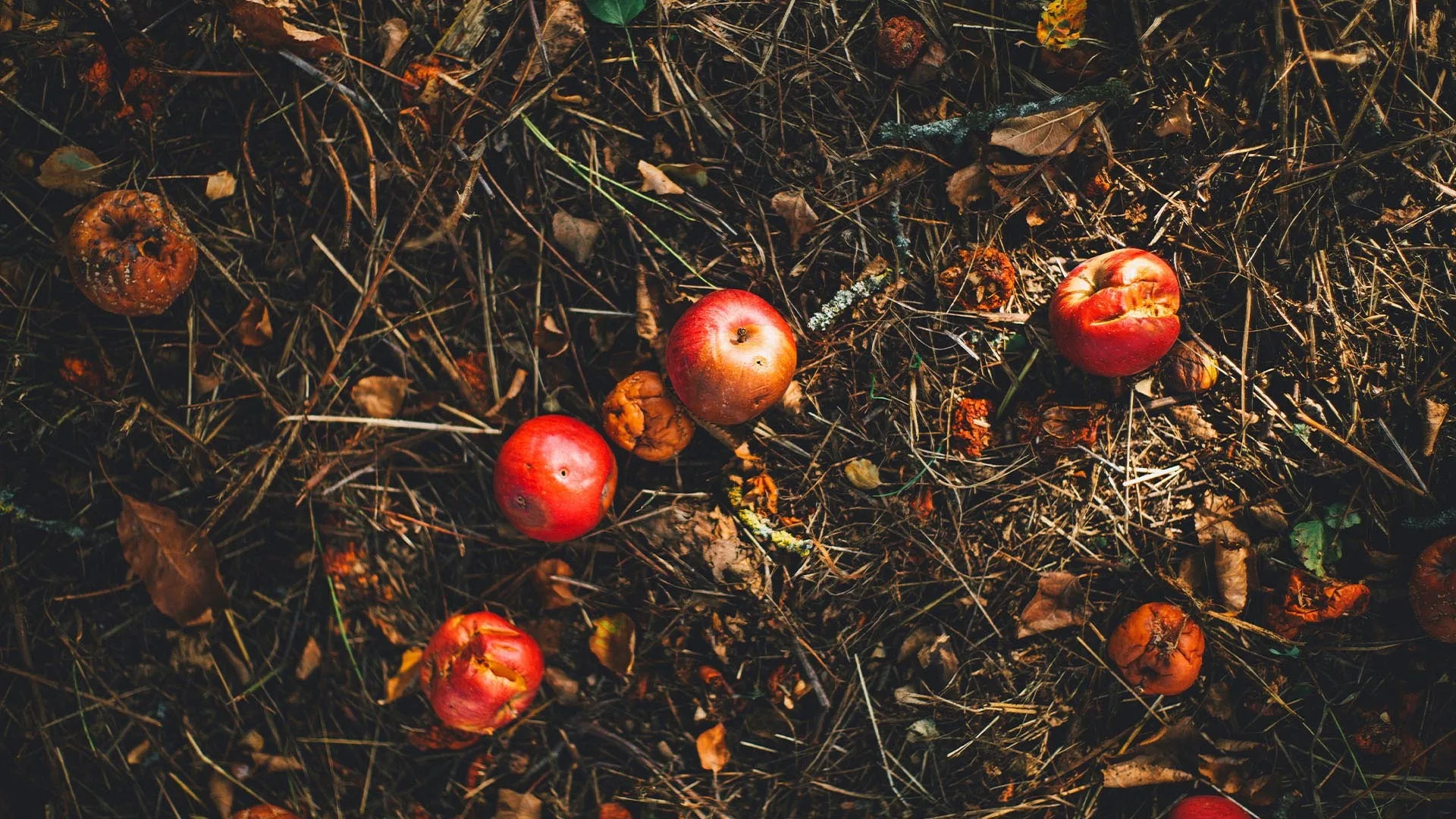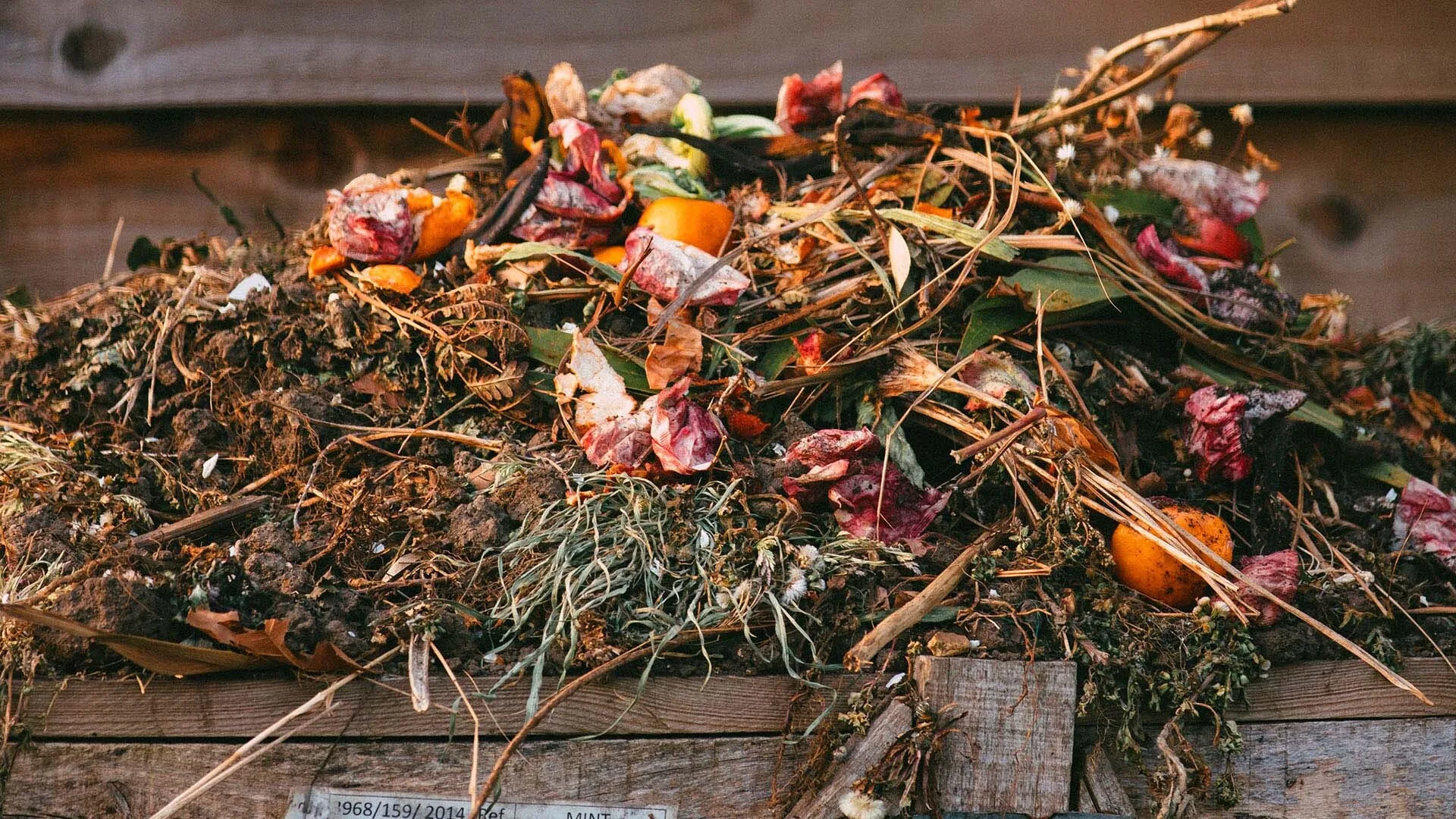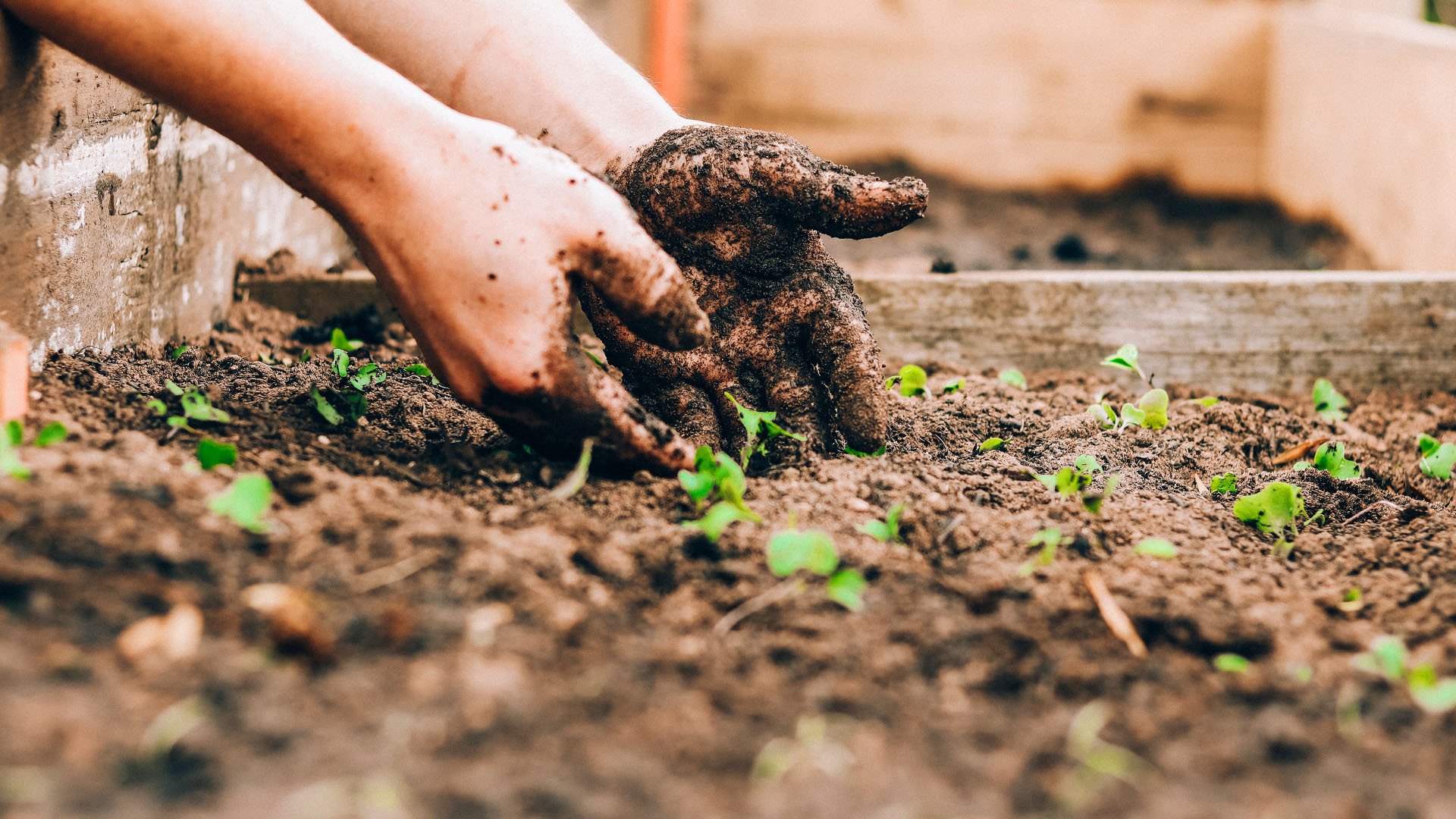Published on
Table of contents
Composting is an easy and environmentally friendly solution to reduce the amount of organic waste that goes to landfills or incineration.

It reduces the many negative impacts from transporting and disposing of waste materials: air, soil and water pollution, not to mention the effects on human health, fauna and flora.
Putting organic waste back in the soil
Naturally, organic matter slowly decomposes when exposed to the air. With time, it forms a soil that allows nutrients to return to the earth. Composting simply accelerates this decomposition.
Many organic materials (which make up to 47% of our household garbage) can be composted: fruit and vegetable peels, coffee grounds, dead leaves, etc. With minimal maintenance, compost can be ready within a few months, and can enrich your flower beds, vegetable gardens, flower boxes, lawns, etc.
- 47% amount of household waste that is organic and therefore compostable
Though many municipalities provide brown bin collection for organic materials, it's also possible (and ecological) to do it at home! Some municipalities encourage its citizens to do so by providing information and sometimes even composters. You can contact your municipality to find out about these programs or to encourage their implementation.
« Composting is a process of biological transformation of organic matter, in the presence of water and oxygen. Fermentation takes place and micro-organisms transform the waste to form, after maturation, compost: a stabilized product, hygienic and rich in humus, very useful in the garden »
How to compost
Composting is not complicated. If you follow a few basic rules and organize yourself well, it quickly becomes second nature.
Organic matter needs a good level of humidity, oxygen, and a variety of residues in order to decompose. It is therefore important to:
Mix different organic waste together;
Stir the mixture and let it breathe - to encourage action by the microorganisms, and to homogenize the final product;
Pay attention to the humidity. Compost should not be soggy, but very humid.
Finding the best spot
Place the bin on a flat, well-drained surface that is easy to access year-round, and preferably in a location that is neither too sunny nor too shady. Turn over the soil where the composter will be installed.
Creating a strong foundation
After placing the composter, cover the bottom with a row of small branches. This will allow air to circulate and improve drainage. At the beginning, add mature compost, garden soil or a starter product (available at garden centres) to your waste. This will speed up the composting process. You can repeat this process as needed.
Sustaining and nurture
Alternate wet residues (kitchen waste) and dry residues (dead leaves, newspapers, straw, wood chips, etc.). It is preferable to always finish with a layer of dry residues or potting soil to avoid odours. At least twice a month, turn the fermenting pile with a fork or shovel to aerate it, in order to speed up the decomposition process and avoid odours.
Reaping the rewards
Your composter should allow you to collect mature compost through a trap door or door at the bottom. As the waste is piled up, it decomposes at the bottom into compost.
Composters
Here are some useful questions to help you choose your composter:
How much space do I have?
Is the look of the composter important?
What is my budget?
Are there any municipal bylaws governing the use or size of composters?
Does my city or an organization in my area subsidize the purchase of composters or offer composting training?

There are many models of composters available, some of them are even very elegant! Most hardware stores and garden centres carry them, and it's not very complicated to make your own composter.
If you have a large yard, you could also simply compost "in piles". In a remote corner, simply pile up the waste. Make piles and turn them regularly to activate fermentation. The natural watering and the large surface (oxygenation) will be to your advantage.
Essential features of a composter
A lid to protect the compost from rain and snow and to control the humidity level
Holes or openings to promote air circulation
A means of removing the final product, usually a trap door at the bottom of the composter
Easy to find or build at home ⚒️
Most hardware stores and garden centres carry them, and it's not very complicated to make your own composter.
Les matières humides
Les déchets humides contiennent de l'eau, très utile au processus, mais seuls, ils se tassent et s'asphyxient, générant des écoulements de jus et des odeurs désagréables.
Pelures et restes de fruits et de légumes
Déchets verts de jardin : fleurs fanées, résidus de taille, résidus de tonte, mauvaises herbes (sans graines mûres), etc.
Les matières sèches
Les déchets plutôt carbonés compostent très lentement s'ils sont seuls.
Sachets de thé, de tisane et marc de café (avec filtre)
Restes de pain, riz, pâtes alimentaires, légumineuses
Écales de noix
Coquilles d’œufs écrasées (contiennent des éléments minéraux et facilitent l'aération)
Feuilles d'arbre séchées (elles se décomposent plus vite si elles sont déchiquetées)
Gazon sec
Vieux terreau d'empotage
Paille, foin, sciure de bois, brindilles,
Papier journal
Poils d’animaux et cheveux
Les matières à éviter
Viande, poisson, crustacés et os
Produits laitiers
Graisses et huiles
Plastique
Métaux
Excréments d'animaux et litières d'animaux
Feuilles de rhubarbe
Mauvaises herbes montées en graines ou rampantes
Plantes ou les feuillages malades
Cendre de bois
Chaux (lime)
Briquettes de barbecue
Contenu du sac de l’aspirateur
Charpie de la sécheuse
Matériaux contaminés avec des pesticides ou des produits dangereux (par exemple, le bois traité)
The compost is ready!
It's quite easy to recognize mature compost: dark brown, it looks like good soil, has a good humus smell and you can't recognize any of the waste materials used (except for a few hard-to-compost materials like eggshells and pits).
To know almost everything about the science of compost tea, listen to this video. For a recipe to make at home, have a look at this guide.

How to use compost
Compost is not a fertilizer, but an excellent amendment for garden soil, as it nourishes the soil, improves its structure and aeration and increases its water retention capacity. You can use it indoors or outdoors:
Mix it with the top six inches of garden soil and use it around trees, shrubs, vegetables and flowers.
Mix it with your planting and transplanting soil (at a rate of about one-third compost by volume).
Spread the sifted compost on the lawn, after aerating it.
To speed up the process
To improve and accelerate your composting, the following factors can influence the curing time (5):
The right proportion of wet and dry matter
The size of the residues used (the smaller the pieces, the faster the process)
Proper aeration and moisture content
The method used and the volume of material composted
Tips to increase your chances of success
Keep a resealable container in the kitchen in which to place your table scraps. A nice stainless steel container near the sink is very practical.
If you generate a lot of waste and have room to spare, use two composters. While the compost matures in one container, you use the other one on a daily basis.
You can put waste in the composter all winter. The decomposition process slows down or stops when the pile is frozen, but it starts up again very quickly in the spring, after a good turning.
Empty the composter as much as possible in the fall to make room.
If you don't have a garden, you can donate your compost to a school or community group for their landscaping.
And remember: it's important to eat well, "not too much, just enough", while being careful to waste as little food as possible. Be sure to get the anti-waste reflex before you compost!
Lisez notre fiche sur
See document
- Caractérisation des matières résiduelles du secteur municipal 2015-2018, Recyc-Québec
- Compost : les bases du compostage, Xavier Gerbeaud, gerbeaud.com
- Compostage domestique, Recyc-Québec
- Réduisez votre quantité de déchets : compostez, Environnement Canada
- Comment faire son compost?, Ville de Québec

